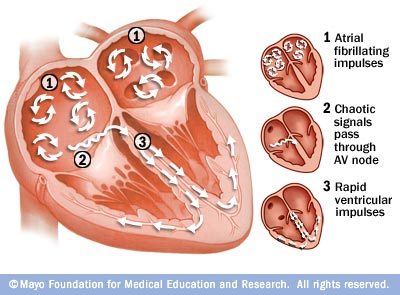U-shaped curve revealed for association between fish consumption and atrial fibrillation
Moderation seems to be key when it comes to eating fish to prevent atrial fibrillation (AF) according to an observational study presented at the EHRA EUROPACE congress held 23 to 26 June in Athens, Greece.
The study found a U-shaped association between consumption of marine n-3 polyunsaturated fatty acids (n-3 PUFA) and the risk of developing AF, with people who have both low and high intakes found to suffer more from AF than those with median intakes. The lowest risk of AF was found in those who consumed around 0.63 g marine n-3 PUFA per day, which corresponds to around two servings of fatty (oily) fish per week.
Earlier studies have reported that regular consumption of fish can exert beneficial effects in preventing the development of AF. Notably, in the Cardiovascular Health study², which included 4,815 participants, a 28% lower risk of AF was observed among people who consumed fish one to four times per week compared with those who ate fish less than once per month. However, such observed associations have not been confirmed in all cohort studies³?8.
In the current study, Doctor Thomas Rix and colleagues from Aalborg University Hospital in Denmark, set out to examine the hypothesis that a negative association exists between the development of AF and consumption of n-3 PUFA. “Since AF is present in over six million people in Europe and associated with considerable morbidity, mortality and economic costs, preventing AF by achievable dietary changes would be of major public interest,” said Dr. Rix.
The investigators made use of the Danish Diet, Cancer and Health cohort 9, which between 1993 and 1997 enrolled a total of 57,053 Danish participants aged 50 to 64 years. The study, funded by the Danish Cancer society, had been initiated with the primary objective of exploring the role of diet in the development of cancer. Baseline data recorded for the study included a semi quantitative food frequency questionnaire with detailed questions about the consumption of fish and food products containing fish that enabled the calculation of average n-3 PUFA intakes. Levels of N-3 PUFA/day were divided into quintiles: with quintile 1 representing 0.00-0.38g marine n-3 PUFA/ day; quintile 2 representing 0.39-0.53g marine n-3 PUFA/day; quintile 3 representing 0.54 to 0.73 g marine n-3 PUFA/day; quintile 4 0.74 to 0.99 g marine n-3 PUFA/day; and quintile 5 1.00-7.22 g marine n-3 PUFA/day.
Follow-up of AF events in the population was undertaken using the Danish National Patient Registry, which recorded discharge diagnoses from hospital admissions, emergency rooms and outpatient clinics. The registry was facilitated by the Danish practice of identifying every citizen with a unique personal identification number that enables cross links to be made between different national registries.
 Altogether a total of 3,425 incident cases of AF were registered during 13.6 years of follow-up. When data was analysed in a multivariate Cox regression model, in comparison to the lowest quintile a 9% lower risk of AF was seen for the second quintile (HR 0.91 95% CI 0.81-1.02); a 13 % lower risk of AF was seen for the third quintile (HR 0.87, 95% CI 0.78-0.98, p=0.02); a 4% lower rate was seen for the fourth quintile (HR 0.96, 95% CI 0.86-1.07) and a 3% increased rate was seen for the 5th quintile (HR 1.03, 95% CI 0.92-1.15).
Altogether a total of 3,425 incident cases of AF were registered during 13.6 years of follow-up. When data was analysed in a multivariate Cox regression model, in comparison to the lowest quintile a 9% lower risk of AF was seen for the second quintile (HR 0.91 95% CI 0.81-1.02); a 13 % lower risk of AF was seen for the third quintile (HR 0.87, 95% CI 0.78-0.98, p=0.02); a 4% lower rate was seen for the fourth quintile (HR 0.96, 95% CI 0.86-1.07) and a 3% increased rate was seen for the 5th quintile (HR 1.03, 95% CI 0.92-1.15).
“The 13% observed lower risk of AF seen at moderate intakes of marine n-3 PUFA compared with low intakes may be related to a reduction in ischemic heart disease and anti-inflammatory effects in addition to direct anti arrhythmic effects,” said Dr. Rix. He noted that in one study, treatment with 1.8g n-3PUFA/day in patients with low intakes of fish resulted in prolongation of the atrial effective refractory period and less inducible AF, both in subjects with AF8 and subjects without AF10.
The biological mechanisms behind the higher risk of AF observed for high intakes of n-3 PUFA compared to moderate intakes were more difficult to explain,” said Dr. Rix. “We can only speculate that the balance between AF inhibiting and AF promoting effects can change according to co morbidities and intakes of marine n-3PUFA. This is the first time that such an association has been shown and it needs to be explored in further studies. However, it may help explain some of the contradictory results obtained in earlier studies.”
###
Jacqueline Partarrieu
press@escardio.org
33-492-947-756
European Society of Cardiology